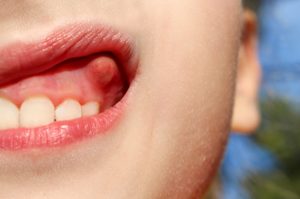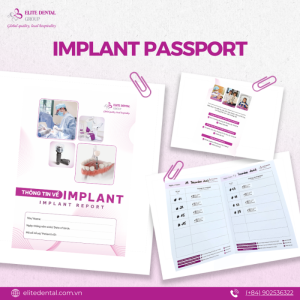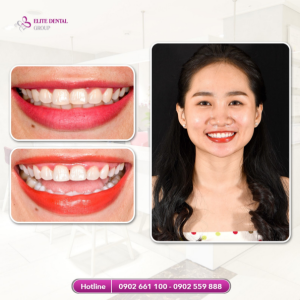Table of content
- 1. What is Asymmetrical Jaw?
- 2. Recognizing the Signs of Uneven Jaw
- 3. Causes of Jawbone Deviation
- 4. Is Asymmetrical Jaw a Serious Problem?
- 5. How to Treat a Asymmetrical Jaw?
- 6. Where to Find Reputable and Effective Treatment for Jaw Deviation?
- 7. Other Questions About Jaw Deviation
- 7.1. Is corrective jaw surgery painful?
- 7.2. At what age can a child start orthodontic treatment?
- 7.3. How long does it take for orthodontic treatment for a deviated jaw to be effective?
- 7.4. Can braces completely fix a deviated jaw?
- 7.5. How much does it cost to correct a deviated jaw?
- 7.6. Should I try to treat a deviated jaw at home?
Asymmetrical jaw is a type of defect that causes facial asymmetry. This is a fairly common condition that leads to anxiety and self-consciousness for many people due to an unbalanced face. Therefore, understanding the causes, symptoms, and timely treatment for a deviated jaw is essential for those affected.
1. What is Asymmetrical Jaw?
Jaw deviation (also known as a misaligned bite or jaw muscle deviation) is a condition where the jawbone is shifted to the right or left or grows excessively forward or backward. This results in an imbalance between the upper and lower lips and the overall facial structure.
There are several types of jaw muscle deviation, with the most common being:
- Upper-Lower Jaw Deviation: Occurs when the upper jaw protrudes excessively (overbite) or recedes (underbite) in relation to the lower jaw.
- Left-Right Jaw Deviation: This is when the contour of the jawbone on both sides develops unevenly, causing one side of the face to be convex while the other is concave, or resulting in a crooked mouth.
Additionally, an impacted wisdom tooth that pushes against adjacent teeth can also cause jawbone deviation, leading to facial deformities over time. Similarly, misaligned teeth on the dental arch can lead to crooked teeth and a deviated chewing plane.
2. Recognizing the Signs of Uneven Jaw
You can identify a deviated jaw based on the following signs:
- Visibly, the upper or lower jaw appears shifted to one side; simultaneously, the teeth may protrude too far forward or backward.
- Pain in the face or jaw, pain in front of the ear, or temporomandibular joint (TMJ) pain. The pain intensity increases with mouth movement.
- Difficulty moving the jaw, sometimes even being unable to close the mouth normally.
- A sensation of misalignment or crookedness when biting down on food.
- Difficulty with communication.
3. Causes of Jawbone Deviation
Below are five common causes of jaw deviation:
3.1. Congenital Asymmetrical Jaw
An individual can be born with jaw deviation due to abnormal jawbone development, causing an imbalance between the upper and lower jaws and significantly affecting oral health.
3.2. Jaw Deviation Due to Bad Habits
Habits such as tongue thrusting, sleeping on one side, or frequently resting your chin on your hand create a high risk of developing jawbone deviation. Furthermore, chewing on only one side can cause that side of the jaw to overdevelop compared to the other, leading to deviation.

3.3. Jaw Deviation Due to Trauma
Trauma from accidents, falls, or sports-related injuries can cause the jawbone to fracture, crack, or shift, impacting aesthetics and diminishing chewing function.
3.4. Chewing Deviation Due to Dental Issues
Facial asymmetry due to dental alignment often occurs when teeth are crowded, crooked, or misaligned on the arch. If not treated promptly, it can lead to uneven jaw development and a deviated chewing plane.
3.5. Incorrect Development of the Jawbone
Facial asymmetry due to skeletal issues typically starts when the two sides of the jawbone develop unevenly. There are three scenarios that describe this development:
- One side is overdeveloped while the other develops normally.
- One side develops normally, but the other is underdeveloped.
- One side is overdeveloped while the other is underdeveloped.
3.6. Surgical Complications
Jaw deviation can also be related to jawbone surgery (osteotomy). If errors or technical faults occur during the procedure, the jawbone is at risk of becoming misaligned and losing its original natural shape.
4. Is Asymmetrical Jaw a Serious Problem?
Regardless of the cause, jaw deviation requires early intervention.
Is it harmful to leave a deviated jaw untreated? The answer is YES. It can progress, becoming more severe, affecting facial aesthetics, and impairing chewing function. Specifically:
4.1. Severe Reduction in Aesthetics
This is the most visible consequence of a deviated jaw. The misaligned position of the jaw (one side higher, one lower) creates a facial imbalance. This directly impacts aesthetics, causes facial deformities, and leads to a loss of confidence in social situations.
4.2. Impaired Chewing Function
The occlusal (bite) discrepancy caused by a deviated jaw creates high spots and interferences, obstructing the normal movement of the jaw. Over time, this reduces chewing efficiency, making it difficult to eat, causing loss of appetite, and potentially leading to malnutrition (especially in children).
4.3. Causes Joint Pain, Affecting Quality of Life
Whether the deviation is upper-lower or left-right, it increases pressure on the temporomandibular joint (TMJ). This puts the patient at risk for TMJ disorders, with common symptoms like joint pain and persistent headaches, negatively impacting their quality of life.

4.4. Difficulty with Oral Hygiene
Individuals with a deviated jaw not only find eating difficult but also face challenges with oral hygiene. The side of the jaw that is deviated bears more force, leading to increased tooth wear and thinner enamel, which elevates the risk of cavities, pulpitis, or pulp necrosis. The less-used side has weaker surrounding tissues, making the patient more susceptible to gum disease, periodontitis, or bad breath.
4.5. Increased Risk of Stomach Problems
Inefficient chewing due to jaw deviation means food is not broken down properly. This can increase the burden on the stomach, potentially leading to gastrointestinal diseases and negatively affecting overall health.
4.6. Difficulty with Pronunciation
In many cases, a deviated jawbone increases pressure on the joint, causing unclear or inaccurate speech, and it can even result in a lisp.
5. How to Treat a Asymmetrical Jaw?
Currently, surgery and orthodontics are the two most common treatments for a deviated jaw. To determine the appropriate method, consider the following information:
5.1. Surgery—For Cases of Jaw Deviation Due to Skeletal Issues
Typically, for individuals with severe jaw deviation or those who are past the age for skeletal modification, an orthodontist may recommend surgery. In jaw surgery, a surgeon will cut or graft bone to reposition the jawbone, correcting the deviation.
Although effective, corrective jaw surgery carries risks, including blood loss, infection, nerve damage, or jaw joint pain, and requires a long recovery period. Therefore, patients should consider it carefully. If surgery is necessary, it must be performed by an experienced oral and maxillofacial surgeon in conjunction with an orthodontist.
5.2. Orthodontics (Braces)—For Cases of Facial Asymmetry Due to Dental Issues
For cases where jaw deviation is caused by crooked teeth, crowding, or a bad bite, the non-surgical method of orthodontics (braces) can be applied. This treatment uses specialized dental appliances to move misaligned teeth and the jawbone into their correct positions, resulting in a balanced face and harmonious lip-nose-chin relationship.
Can braces fix facial asymmetry?
Currently, orthodontic methods for correcting jaw deviation include traditional braces and clear aligners.
- Traditional Braces: While effective and less expensive, they are less aesthetic, can be inconvenient for eating, and make oral hygiene more difficult.
- Clear Aligners (e.g., Invisalign): This option offers superior aesthetics. The transparent trays replace wires and brackets, so they don’t feel bulky. They fit snugly over the teeth, allowing clients to eat comfortably and feel confident in daily interactions.

5.3. Combination of Braces and Surgery—For Cases of Jaw Deviation and Crooked Mouth Caused by Both Teeth and Jaw
For cases where the deviation is due to bad habits or related to over or uneven jawbone development, a combination of surgery and orthodontics will be necessary. In this approach, the doctor will typically recommend braces first to move the teeth into their correct positions, followed by jaw surgery to create a more balanced and harmonious face.
In addition to the methods above, individuals with mild jaw deviation can improve the condition by changing their lifestyle habits. Here’s how to correct a deviated jaw at home:
- Distribute chewing forces evenly on both sides to create balance.
- Vary your sleeping position; avoid sleeping on one side for too long.
- Abandon bad habits like teeth grinding or resting your chin on your hand.
- Incorporate physical therapy exercises, such as jaw relaxation, mouth opening, resistance exercises (opening-closing), and side-to-side jaw movements to support the development of the jaw structure and balance the bite.
Ultimately, each treatment method has its own characteristics. The right choice depends on the severity of the deviation, your current dental health, your financial situation, and the doctor’s diagnosis. Therefore, it is best to have a direct consultation at a reputable dental center for specific advice and the most accurate and cost-effective treatment plan.
6. Where to Find Reputable and Effective Treatment for Jaw Deviation?
Thousands of clients have had effective and gentle treatment journeys for jaw deviation at Elite Dental. Our standout feature is our specialized orthodontic service, with a team of highly skilled doctors who have over 10 years of experience with both clear aligners and traditional braces. Our doctors have a deep understanding of the biological principles and safe methods for jaw movement, ensuring treatment yields comprehensive and long-lasting results.
Furthermore, Elite Dental regularly updates its advanced equipment, including the Sirona imaging system, Trios 3D intraoral scanner, and ClinCheck treatment prediction software, to make the orthodontic process as safe and comfortable as possible. Our clinic is well-invested, clean, and meets international sterilization standards, allowing clients to feel completely at ease during their treatment journey here.
See what our clients say before and after their jaw deviation treatment at Elite Dental:
- Mr. Nghi (24 years old) came to Elite Dental with a severe bite deviation. This not only affected his aesthetics and chewing but also would have led to more severe jaw asymmetry over time. Thanks to Dr. Do Quynh Nhu—an Executive Committee Member of the Ho Chi Minh City Association of Orthodontists and Elite Dental’s orthodontic specialist—who showcased a similar case and prescribed a precise treatment plan, Mr. Nghi now has a new, healthy smile and a balanced face that gives him more confidence.
- Like Mr. Nghi, Ms. Th.T successfully completed her 2.5-year Invisalign journey at Elite Dental. Her overjet, gapped front teeth, and posterior crossbite made eating difficult and caused severe jaw deviation. However, our orthodontist helped “reshape” her teeth for a more charming smile and corrected the crossbite. As a result, her lower jaw now aligns correctly with her upper jaw, changing her facial structure and giving her a much more beautiful and harmonious appearance.

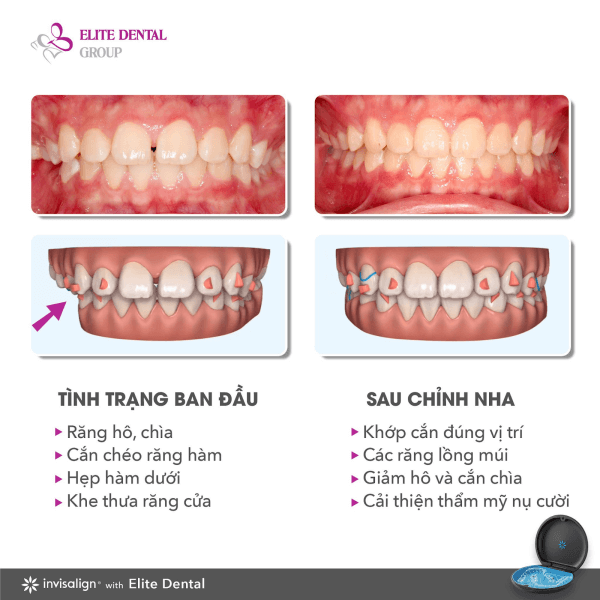
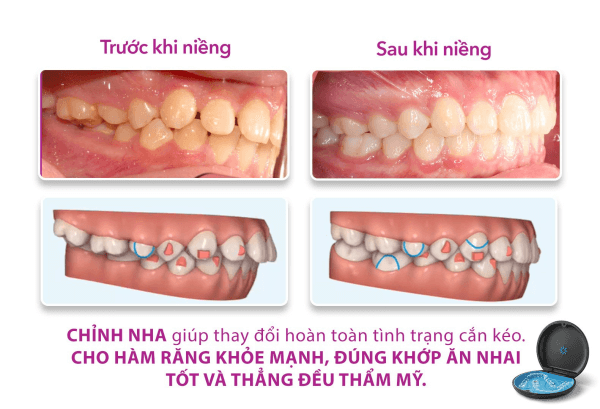
- In another case, young T.A. was diagnosed with a crossbite (one side of her upper teeth was inside her lower teeth). This caused her joint pain, difficulty eating, and facial distortion. After 3 years of treatment at Elite Dental, the unilateral crossbite has been corrected, giving her a healthy, beautiful, and radiant smile.

7. Other Questions About Jaw Deviation
7.1. Is corrective jaw surgery painful?
Typically, patients will feel pain and discomfort after surgery as the anesthesia wears off. However, the doctor will prescribe pain medication to manage this, so there is no need to worry excessively.
7.2. At what age can a child start orthodontic treatment?
According to the American Dental Association (ADA), the ideal age for braces is between 6 and 12 years old. This is when the jawbone is developing vigorously, making it easier to guide and move it into the correct physiological bite.
7.3. How long does it take for orthodontic treatment for a deviated jaw to be effective?
The duration for correcting a deviated jaw with braces typically ranges from 1 to 3 years, depending on the condition and the chosen method.
7.4. Can braces completely fix a deviated jaw?
Braces can improve jaw deviation, especially when the cause is related to misaligned teeth and an improper bite. However, the effectiveness depends on the severity and the root cause. If the deviation is skeletal or due to non-dental issues, surgery may be required.
7.5. How much does it cost to correct a deviated jaw?
The cost will depend on the dental condition, the clinic, and the method. At Elite Dental, the price for orthodontic treatment ranges from 50,000,000 to 137,500,000 VND (depending on the method). For an exact cost and specific treatment plan, please contact Elite Dental HERE.
7.6. Should I try to treat a deviated jaw at home?
The answer is NO. You need to see a dentist or specialist for an examination and advice on the appropriate treatment. Attempting to self-adjust your jawbone can lead to serious consequences like worsening the deviation, causing pain, and even resulting in a crooked mouth, further jaw deviation, and other joint problems.
Early treatment for jaw deviation is highly recommended to prevent dangerous complications. Among the options, orthodontics is the most chosen method for achieving a beautiful and balanced face. Patients should choose a specialized orthodontic center like Elite Dental, with a team of skilled and experienced doctors who can help provide a comfortable, gentle, and comprehensively effective orthodontic experience.
Reference source:
- Ryan Owen. Lateral Jaw Deviation: Symptoms, Causes, and Treatment Options. 19 03 2024. https://mewing.coach/blog/lateral-jaw-deviation
- European Journal of Medical Research. Treatment of the mandibular shift in an adult woman and the diagnostic value of joint space index: a case report. https://eurjmedres.biomedcentral.com/articles/10.1186/s40001-020-00451-0


